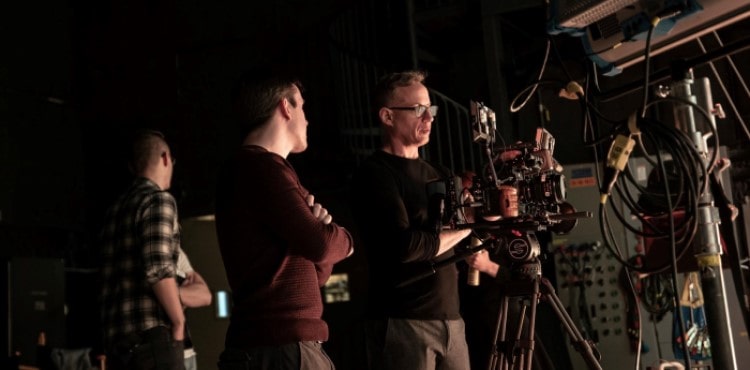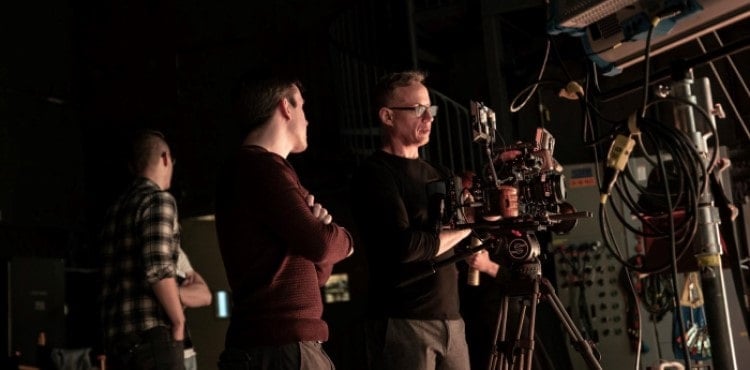Film equipment insurance could be cheaper than you think

Every photo and video shoot has risks for any production company. Your camera equipment could be damaged, lost or stolen. Replacing your own equipment is expensive, but the right business insurance and coverage can be an affordable way to protect your wallet and your business.
Whether you’re producing documentaries, commercials, special event videos, or feature films, business insurance can cover your risks of managing on-screen talent, your crew, and any support staff.
It is important for photographers, photography studios, videographers, and video production studios to understand what kind of risks they might encounter, what insurance policies meet their needs, and how much these policies cost.
Video production tools pose a high risk to small businesses
Overall, the cost of video production equipment is one of the most significant expenses for your business. There is a high price tag associated with repairing and replacing damaged or stolen equipment, which is why many in the photography and film industry use video equipment insurance to help offset these costs.
Business insurance for photography and video professionals will usually provide coverage for most equipment that a videographer would use, including:
- Cameras
- Lenses and filters
- Lighting equipment, including reflectors and light modifiers
- Microphones
- Audio recorders
- Boom poles, tripods, grips, and dollies
- Camera rigs and gimbals
- Computers, editing software, and external hard drives
- Cables, batteries, and camera bags
- Drones
What is excluded from film production insurance?
If you rent or lend any of your video equipment to someone else, it is unlikely to be protected while it is in that person’s possession. Your film gear insurance may also not cover you for renting equipment or if you fail to secure your own equipment, such as leaving it inside an unlocked vehicle where it could be stolen.
How much does film production insurance cost?
So how much can you expect to pay for video production insurance? It depends on a few different factors about your business, including:
Deductibles and coverage limits
The deductible and coverage limits on your business insurance policy can significantly shape your monthly payment over a full year of coverage.
A deductible is the amount you would have to pay out of pocket before your insurance policy kicks in. It might be tempting to choose a policy with a high deductible and lower premium, but this could put you in a financial bind later if you have an expensive claim.
For example, if you manage a video production company that owns several pieces of equipment, it may be recommended to purchase a policy with a lower deductible due to the higher associated risk of equipment being damaged or stolen.
You also have two types of scope limits:
- Per-occurrence: How much coverage a policy offers on each individual claim.
- Aggregate: Total coverage of all claims within a year, on your annual policy.
It’s important to choose policy limits that give you an affordable premium, with the coverage amounts you need to protect your bottom line.
By paying just a few hundred dollars a year, you can protect equipment worth tens of thousands of dollars and protect your business from common risk exposures, such as lawsuits and theft.
Film equipment you own
If you own a photography or video production company that uses multiple types or high-quality cameras or videos, you’ll want to choose a policy with a higher coverage limit. This would cause your insurance policy to cost more but it would also keep your expensive equipment safe from any common risks.
If your company only uses a few cameras or videos of average quality, you could probably buy a policy with a lower coverage limit, which would help keep your insurance costs lower.
The type of work you do
The work you do also affects the cost of your insurance policy. If you travel a lot for your video sessions or photo sessions or shoots in places with higher risks, you should look at a policy with higher coverage limits, which could lead to a higher cost for your coverage.
What types of insurance do photographers and videographers need?
When choosing coverage for a photo or video business, it is recommended that professionals research these policies:
Property insurance
Also known as “camera insurance,” videography property insurance covers most of your video equipment, including cameras, lenses, computers, and editing bays, if your equipment is damaged or stolen . This will help you get back on track to finish a project. In most cases, you can apply coverage to both owned and rented equipment, as well as studio spaces.
Videography property insurance starts around $35 per monthor $420 annually.
General liability insurance
General liability insurance covers copyright infringement lawsuits and third party (non-employee) injuries that occur in your office or on set. It also provides coverage for damage to third party property, including accidental damage to another person’s property, such as a nearby car being damaged by a stunt gone wrong. This policy is an especially important consideration if you are shooting on location.
Videographers pay a median of $23 a month, or $275 per year, for general liability insurance. Most photo and video businesses (96%) choose general liability policies with a Limit of $1 million per event and a Aggregate limit of $2 million.
Business owner policy (BOP)
A business owner’s policy (BOP) combines general liability insurance and commercial property coverage under one policy. It’s usually cheaper than buying each coverage separately. Most video professionals benefit from a business owner’s policy, as it will usually cover most of the risks associated with shooting with your own equipment in multiple locations.
Video professionals pay around $43 a month for a business owner’s policy, or about $520 per year.
Professional liability insurance
Also known as errors and omissions insurance, professional liability insurance covers you if a customer sues you for unfulfilled or unsatisfactory work. If you can’t finish a project because a hard drive has crashed or been stolen, your property insurance would cover damage or theft of the equipment – but not the cost of a lawsuit from your customer. Professional liability would cover your attorney’s fees, court costs, and any settlements.
Video professionals typically pay a median premium of $53 per month, or $639 per year, for professional liability insurance. The rate will depend on the type of services you offer and other key factors.
Over half of photo and video businesses (58%) choose professional liability policies with a Limit of $1 million per event and a Aggregate limit of $1 million.
Workers compensation insurance
If your video production company has any employees, you will likely need workers’ compensation insurance as well. This policy is required in almost all states and provides essential coverage for workplace injuries and related liabilities. This includes covering medical bills and partial lost wages.
A workers comp policy costs approx $55 per monthor $662 annually, for video professionals.
How to save money on film production insurance
There are a number of strategies you can use to save on your film production insurance, including:
Evaluate your equipment costs
Your photo and video equipment will be the biggest and most important purchase for your company. The brand and quality of your equipment will determine your specific cost. It is important to evaluate and be aware of your total equipment costs, especially when creating a budget.
Below is a summary of the most common equipment you will need and the average cost:
- Camera: $300-$500
- Tripod: $20-$50
- Lighting set: $200-$300
- Background system: $40-$50
- Reflectors: $20-$30
Claiming tax write-offs
You should keep a detailed record of purchases for your company and claim tax write-offs, where possible.
You’d be surprised how many expenses you can count as write-offs. Examples include:
- Photography equipment, such as cameras, camera lenses, and tripods
- Creative and editing software
- Print advertising
- Business Cards
- Studio expenses, such as rent and bills
- Online advertising, including Facebook Ads and Google Adwords
- Creative support, including hiring an editor, designer or set support
If you work from home, you could also claim your wi-fi bill, home office furniture, and your power and water bills as cancellations. Similarly, if you travel to work, you could claim your gas bills, parking costs, and tolls.
Combining insurance policies
Combine insurance policies where possible. For example, it is often cheaper to purchase a BOP than to purchase general liability and commercial property insurance separately.
Manage your money efficiently and with goals
It’s a good idea to separate your business and personal finances, and keep track of all expenses. Setting monthly and annual budget goals will also help you plan for a long-term vision. Meeting with an accountant and CPA could also be beneficial.

